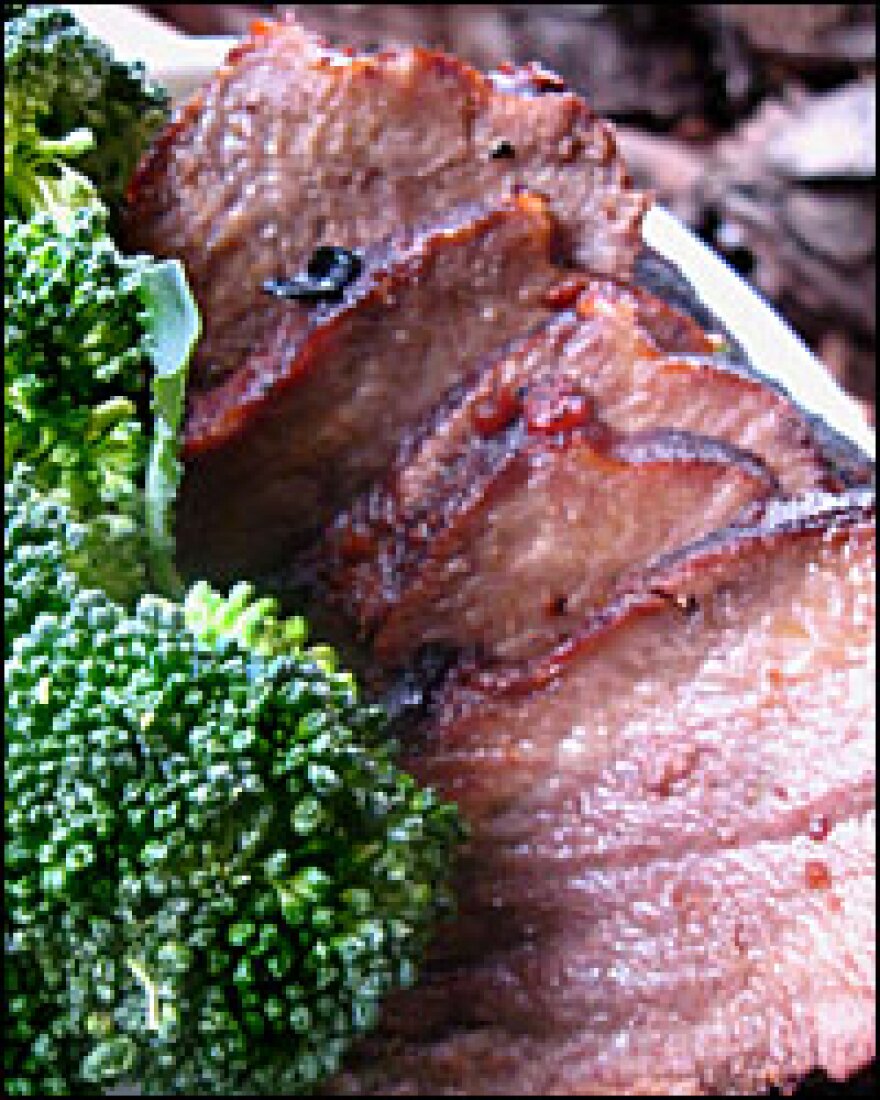
I adapted this recipe from the recent reprint of the classic 1927 French cookbook, Madame Saint-Ange's La Bonne Cuisine (10 Speed Press2005). The translation was idiosyncratic ("leave tongue to disgorge"), and there was no indication of when the vegetables were supposed to go in. But the meat was tender and delicious, so I hope I interpreted Madame Saint-Ange's 80-year-old recipe correctly.
Makes 4 servings
1 beef tongue weighing 2 to 3 pounds
1/4 cup white wine
2 carrots, cut into 1/3-inch-thick rounds
1 onion, cut into 1/3-inch-thick rounds
1 or 2 large sprigs thyme
3 fresh or dried bay leaves
1 quart beef broth (if not using homemade, try to choose one without MSG or "hydrolyzed wheat protein," which is the same thing)
1/4 pound chunk of smoked ham, with skin and bone if possible, optional
2 tablespoons corn starch
To prepare the beef tongue: With a sharp knife, cut off any irregularities — fat, bones, dark glands — clinging to the "heel" of the tongue. Trim as much of the bumpy membrane coating the tongue as you can, but don't worry about getting every last bit.
If you have time, let the tongue sit in a large saucepan filled with cold water for an hour or two. Then drain it, refill the saucepan with enough water to cover the tongue, and simmer gently for 15 to 20 minutes.
Skim any scum that forms on the surface of the water. Remove the tongue and submerge it in cold water until cool and firm. Drain it, and remove any remaining white skin with a sharp knife.
Place the tongue in a heavy pot just large enough to hold it (you can curl it slightly). Cover the pot, place it over medium heat, and sweat the tongue until it's dried and firmed a bit, about 15 minutes. Add the white wine and cook until the pot is nearly dry again.
Place the vegetables, herbs and the ham, if using, beneath the tongue and add the broth, which should cover the meat about two-thirds of the way.
Place a circle of buttered or oiled parchment paper directly on the tongue, greased side down. Cover tightly and simmer for 3 hours, either on the stove or in a 375-degree oven. Check the pot periodically, adding water as needed to keep the meat two-thirds covered, and scrape the pot's bottom with a wooden spoon to keep it from sticking. Turn the tongue every half hour or so for the first two hours. After that, baste once or twice.
When the tongue is tender (poke with a skewer to check), remove it to a platter.
Whisk the cornstarch with about 1/3 cup water in a small measuring cup. Strain the cooking juices, which will be nearly grease-free, into a small saucepan and bring to a low boil. When reduced to about 1 1/2 cups, start adding some of the cornstarch slurry, bit by bit, allowing it to come to a boil between each addition. When the sauce has thickened to a light gravy, remove from heat.
Slice the tongue 1/4- to 1/3-inch thick. Serve with the gravy and some steamed vegetables.
Copyright 2023 NPR. To see more, visit https://www.npr.org. 9(MDM3NjYwMjA5MDE1MjA1MzQ1NDk1N2ZmZQ004))

